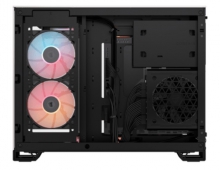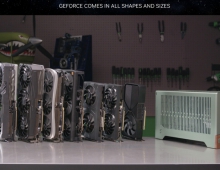
NVIDIA Leads the Edge AI Chipset Market
The frontrunner of the edge Artificial Intelligence (AI) chipset industry market is NVIDIA, followed by Intel, Xilinx, QuickLogic, and Lattice Semiconductor, according to ABI Research.
In 2019, the AI industry is witnessing the continual migration of AI workloads, particularly AI inference, to edge devices, including on-premise servers, gateways, and end-devices and sensors. Based on the AI development in 17 vertical markets, ABI Research estimates that the edge AI chipset market will grow from US$2.6 billion in 2019 to US$7.6 billion by 2024, with no vendor commanding more than 40% of the market.
NVIDIA has the lead at the market with a 39% revenue share in the first half of 2019, ABI Research says. The GPU vendor has a strong presence in key AI verticals that are currently leading in AI deployments, such as automotive, camera systems, robotics, and smart manufacturing. “In the face of different use cases, NVIDIA chooses to release GPU chipsets with different computational and power budgets. In combination with its large developer ecosystem and partnerships with academic and research institutions, the chipset vendor has developed a strong foothold in the edge AI industry,” said Lian Jye Su, Principal Analyst at ABI Research.
NVIDIA is facing competition from Intel with its comprehensive chipset portfolio, from Xeon CPU to Mobileye and Movidius Myriad. At the same time, FPGA vendors, such as Xilinx, QuickLogic, and Lattice Semiconductor, are creating compelling solutions for industrial AI applications. One missing vertical from NVIDIA’s wide footprint is consumer electronics, specifically smartphones. In recent years, AI processing in smartphones has been driven by smartphone chipset manufacturers and smartphone vendors, such as Qualcomm, Huawei, and Apple. In smart home applications, MediaTek and Amlogic are making their presence known through the widespread adoption of voice control front ends and smart appliances.
Moving forward, the AI chipset vendors will likely adopt one of three strategies. The first is creating AI chipsets that target the AI-enabled on-premise server and gateway market. Supporting enterprise use cases, these servers and gateways generally have high processing capabilities and require flexible AI chipset architecture that can support the ever-changing AI inference and training workloads. This is a space currently well-served by NVIDIA, Intel, and Xilinx but new entrants such as Huawei, Graphcore, and Habana Labs may challenge the status quo.
The second strategy is to target intelligent edge devices and nodes, which, to a certain extent, favors vendors that are active in the consumer electronics space. Chipset vendors like Qualcomm and MediaTek have natural advantages here. Captive vendors who design their own AI chipsets, such as Apple, Huawei, and Samsung, have also started to broaden their AI-enabled product portfolio targeting consumer devices.
The final strategy is to target low-cost and battery-powered end devices that feature minimal computational capabilities and long useful lives. These devices are often deployed in smart cities, smart buildings, smart transportation, and utilities, all which rely on public Ethernet or Low-Power Wide-Area Networks (LPWANs) for connectivity. These “very edge” devices require lighter AI implementations, an approach often referred to as tiny or thin AI. ABI Research forecasts shipments for these devices will grow from 0.9 million in 2019 to 5.7 million in 2024, with a CAGR of 45.5%. Traditionally these devices rely heavily on more powerful resources, such as gateways, on-premise servers, and the public cloud for AI training. Recently, many chipset players have engaged in this segment of the market by offering AI chipsets that are ultra-power efficient with a low price point. These include GreenWave Technologies, a startup that develops AI chipset using open-source RISC-V architecture, Lattice Semiconductor, a FPGA chipset vendor, and Syntiant, an Application Specific Integrated Circuit vendor with strength in natural language processing.





















